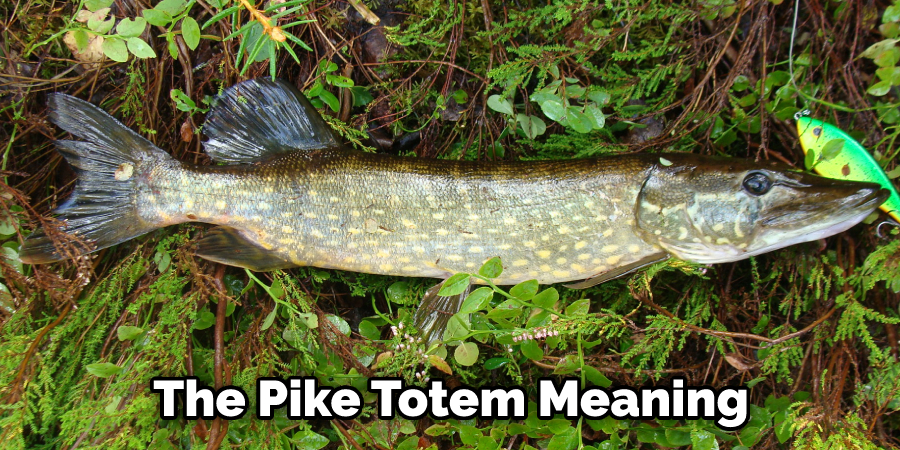Pike Fish

Pike fish are a type of predatory fish found in freshwater habitats around the world. They are known for their long, slender bodies, sharp teeth, and aggressive behavior. Pike fish are ambush predators, lying in wait for prey to come close before attacking with lightning speed. They are opportunistic feeders and will eat a variety of fish, amphibians, birds, and small mammals.
Habitat and Behavior
Pike fish are found in a variety of freshwater habitats, including lakes, rivers, ponds, and marshes. They prefer areas with vegetation or other cover where they can hide from prey. Pike fish are solitary creatures and are not typically found in schools. They are most active at dawn and dusk, when they are most likely to feed.
Types of Pike Fish
There are several different types of pike fish, including:
- Northern pike (Esox lucius): The northern pike is the most common type of pike fish. It is found in North America, Europe, and Asia. Northern pike can grow to be over 4 feet long and weigh over 20 pounds.
- Muskellunge (Esox masquinongy): The muskellunge is a large pike fish that is found in North America. Muskellunge can grow to be over 6 feet long and weigh over 100 pounds.
- Chain pickerel (Esox niger): The chain pickerel is a small pike fish that is found in North America. Chain pickerel can grow to be over 2 feet long and weigh over 5 pounds.
Pike Weapon

The pike, a formidable polearm, has played a pivotal role in warfare throughout history. Its origins can be traced back to ancient times, where it was used as a primary weapon by infantrymen. Over centuries, the pike underwent significant evolution, adapting to changing tactics and technological advancements.
Types of Pike Weapons, Pike meaning
Various types of pikes emerged throughout history, each tailored to specific combat scenarios. The sarissa, a long pike used by the Macedonian phalanx, was renowned for its reach and thrusting power. The Swiss halberd, with its combined axe and spearhead, offered versatility in both thrusting and slashing attacks. The medieval English bill, with its hooked blade, was particularly effective against cavalry charges.
Pike Warfare Techniques
Pike warfare revolved around disciplined formations and coordinated movements. Pikemen formed dense ranks, presenting a wall of pointed pikes against the enemy. They employed a combination of thrusting, pushing, and sweeping motions to keep opponents at bay and break their formations. The pike’s length provided a significant advantage in reach, allowing pikemen to engage from a safe distance.
Strategies in Pike Warfare
Pike formations adopted various strategies to maximize their effectiveness. The phalanx formation, used by the Greeks and Romans, was a tightly packed mass of pikemen that could withstand cavalry charges and infantry attacks. The Swiss pike square, employed by the Swiss mercenaries, was a more flexible formation that allowed for rapid deployment and maneuverability.
The pike weapon, with its rich history and diverse applications, played a crucial role in shaping the course of warfare. Its effectiveness in close combat and its ability to counter cavalry charges made it a formidable force on battlefields for centuries.
Pike Fishing: Pike Meaning
Pike fishing is a thrilling and rewarding experience that requires patience, skill, and the right equipment. With the right approach, anglers can successfully target these elusive predators and enjoy the excitement of landing a trophy pike.
Tips and Techniques
To enhance your chances of success when pike fishing, consider these tips:
- Choose the right location: Pike prefer areas with dense vegetation, drop-offs, and shallow bays.
- Use the appropriate bait and lures: Live baitfish, spinnerbaits, and jerkbaits are effective options.
- Troll or cast: Trolling is a popular method, but casting can also be effective.
- Be patient: Pike are often ambush predators, so it’s important to be patient and wait for the right moment to strike.
Pike meaning – In the vast expanse of nautical jargon, the term “pike” denotes a formidable weapon, its pointed tip piercing through the depths. Yet, in the realm of basketball, a different pike emerges, one that soars through the air, defying gravity’s pull.
Perch basketball , a game of aerial acrobatics, elevates the sport to dizzying heights, where players defy the limitations of the court. And as the ball gracefully descends, it once again assumes the guise of a pike, its trajectory a testament to the indomitable spirit that drives the game.
In the realm of aquatic life, where pike reigns supreme, there dwells a kindred spirit in the form of the sole fish. Its flat, oval shape echoes the stealthy prowess of the pike, while its delicate flavor mirrors the pike’s elusive nature.
Yet, beneath their similarities lies a profound difference: the pike’s predatory instincts contrast with the sole fish’s peaceful demeanor, making them distinct yet intertwined in the tapestry of aquatic life.
The mighty pike, a formidable predator that strikes with lightning speed, is often likened to the graceful glide of a skate fish through the water. Like the skate fish, the pike’s keen senses and stealthy nature make it a master of the aquatic realm, where it reigns supreme as the embodiment of power and precision.
The pike, a formidable predator lurking in the depths, holds a profound significance. Its name, derived from the Old English word “pic,” evokes an image of a sharp, pointed object. For a comprehensive understanding of this aquatic marvel, one must delve into its precise pike definition , which unravels its intricate biology, habitat, and captivating hunting prowess.
Pike, the apex predator, embodies the relentless spirit of the natural world.
In the murky depths of language, a “pike” might evoke images of a sharp-toothed predator lurking in the shadows. Yet, when we venture into the realm of sports, the word “perch” takes on a whole new meaning. Perch basketball , a game of agility and aerial prowess, finds its name in the way players soar through the air like majestic birds of prey.
And as we return to the lexicon of language, we realize that the “pike” of a fish and the “perch” of a basketball player share a common thread: the graceful ascent into the unknown.